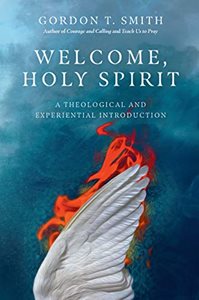An extended review of a 2021 book by Gordon T. Smith
Note: Our print issue contains a shorter version of this review. Faith Today welcomes your thoughts on any of our reviews. We also welcome suggestions of other Canadian Christian books to review: Contact us.
Book by Gordon T. Smith. IVP Academic, 2021. 192 pages. $29 (e-book $25, audio $20)
What does it mean to declare, in the words of the Nicene Creed, “I believe in the Holy Spirit, the Lord and Giver of life, who proceeds from the Father and who with the Father and the Son together is worshiped and glorified, who spoke by the prophets”? This is a central Christian issue. Indeed, the renowned scholar Thomas Oden has noted, “No subject is more prone to fanaticism and novelty than the Holy Spirit…. The work of the Spirit deserves especially careful attention precisely because it is so prone to subjective manifestation and ideological abuse.”
Gordon Smith has tackled this controversial area head-on. He is the president of Ambrose University and Seminary in Calgary, where he also serves as professor of systematic and spiritual theology. He is an ordained minister of The Alliance (formerly Christian and Missionary Alliance) and is also a teaching fellow at Regent College, Vancouver.
The book begins by considering five key images and metaphors for the Holy Spirit in Scripture: “the wind or breath of God, the oil of anointing, the flame of God, living or flowing water, and the dove or hovering bird” (pp.7-8). When we are attentive to these metaphors, we can pay attention to the Spirit in our lives, in the church, and in the world.
The book reflects briefly but deeply on the Spirit’s role in Luke and Acts. With the ascension of Jesus and the gift of the Spirit at Pentecost in mind, Smith concludes that the “The Jesus story makes no sense apart from the remarkable work of the Spirit” (p.28). The interplay between the ascension of Jesus and the gift of the Spirit at Pentecost is instructive, and both are significant in redemptive history. In Acts, Luke depicts the relationship between the Spirit and the Church. There is an emphasis on the reception of the Spirit at Pentecost and subsequently throughout the Book of Acts.
 The Gospel of John is another key place where the Spirit’s role is highlighted. The upper room discourse of John 14-16 stresses that union with Christ is only possible through the work of the Spirit. This informs Smith's insistance that our theology and experience of the Holy Spirit must be thoroughly trinitarian. The Spirit is our Advocate and Helper.
The Gospel of John is another key place where the Spirit’s role is highlighted. The upper room discourse of John 14-16 stresses that union with Christ is only possible through the work of the Spirit. This informs Smith's insistance that our theology and experience of the Holy Spirit must be thoroughly trinitarian. The Spirit is our Advocate and Helper.
Smith also insists on the Spirit's role in the work of creation. That work “was and continues to be the work of all three members of the Trinity. Their roles are distinct, but they are in perfect harmony. The Father is the architect and source of all things; the Son is the model and content and the one through whom all things come into being (John 1:1), and the Spirit effects the vision of the triune God and brings it about” (p.64). Creation care on our part involves careful “tending of the garden.”
The Spirit also plays a vital role in Christian initiation, Smith writes. While Smith recognizes the importance of Christian catechesis which provides an orientation to the Christian belief system and worldview, he lays emphasis as well on the personal need to open the heart to the work of the Spirit (note Paul’s prayer in Ephesians 3:16-19).
There is a close connection between the Holy Scriptures and the Holy Spirit, Smith reminds readers. The Scriptures are Spirit-inspired and possess a unique authority in the life of both the Church and the Christian (2 Timothy 3:16-17). Accordingly, they call for Bible reading that is informed and illumined by the Holy Spirit. Rather than seeking special “Holy Spirit experiences,” Smith urges us to grow in grace and knowledge as we mature in our relationship with the living Christ.
As the book draws to a close, it looks at the Spirit working in both the local and global church.
To sum up, Smith's book is an urgent call to “be attentive and intentional in our understanding of the person and ministry of the Spirit” (p.178).
I agree with Paul Spilsbury's comments on the book jacket: “This gem of a book is rich in Scripture, deep in theological reflection, and immediately applicable to both personal and church contexts. Readers seeking to understand the person and work of the Holy Spirit, not only in the context of an orthodox trinitarian theology but also in their own lives and the experience of the church, will find here a treatment that is clear, insightful, and carefully nuanced.”
Editor's note: We love our reviewers, but we don’t always agree. You won’t either, maybe especially in the Bestsellers and Roundup sections. Do let us know what you think. Sample chapters of most books can be viewed at Books.Google.ca and Amazon.ca. Faith Today earns a small commission when people make purchases using our links to Amazon.ca.